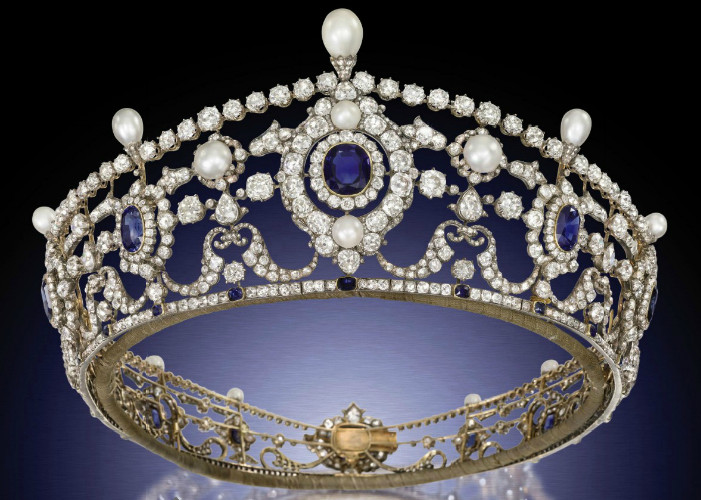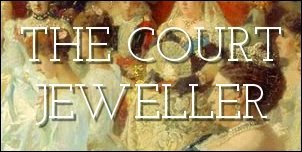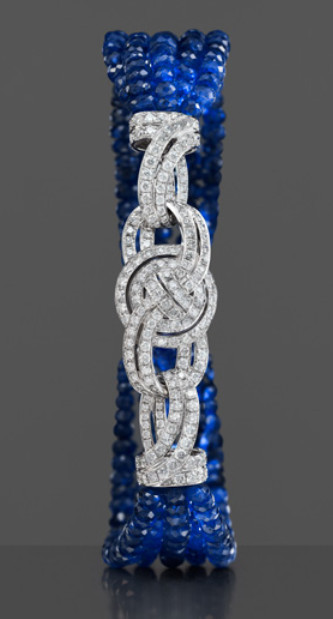 |
| [source] |
Gilded Age Britain was full of oversized, exaggerated tiaras. Today, let’s look at one of the very biggest of the bunch: the sapphire, diamond, and pearl tiara owned by the Dukes of Portland.
The tiara was made for the family by E. Wolff and Co. for Garrard. Most date the construction of the piece to 1890, the year after the 6th Duke of Portland married Winifred Dallas-Yorke. Some of the family’s existing jewels were broken up to provide stones for the enormous tiara. The tiara mixes Ceylon and Burmese sapphires with diamonds and pearls, and the stones are set in silver and gold. The tiara is a circlet, and a rather enormous one at that — it measures more than twenty-one inches in circumference. You can see the size of the tiara above, as worn by a model.
There don’t seem to be any images available online of Winifred wearing her tiara; the family also owned a large diamond tiara, and she chose that piece for major events like the 1902 coronation. The first member of the family who was depicted wearing the tiara was Winifred’s daughter-in-law, Ivy. An ivory miniature of Ivy, then the Marchioness of Titchfield, shows her wearing the tiara and a coordinating sapphire and diamond devant de corsage.
The size of the tiara would have made it incredibly difficult to wear, especially as hairstyles began to trend toward sleek and simple. What worked on a nest of Edwardian hair simply wouldn’t do on the simpler styles of the twentieth century. Perhaps it should come as no surprise, then, that the Cavendish-Bentincks eventually sold the tiara. The Portland jewels had been inherited by Ivy’s daughter, Lady Anne Cavendish-Bentinck. Her parents did not have any sons, so the Portland title went to a distant cousin, but her father made sure that she was able to inherit the lion’s share of the family fortune, including his mother’s tiara.
Lady Anne died in 2008. She never married or had any children of her own, so the tiara was inherited by her nephew, William Parente. He had the tiara, along with many other pieces of jewelry, auctioned at Christie’s in London in 2010. As is often the case with these grand Gilded Age tiaras, it far exceeded its auction estimate, fetching more than $1.1 million from an anonymous buyer.

